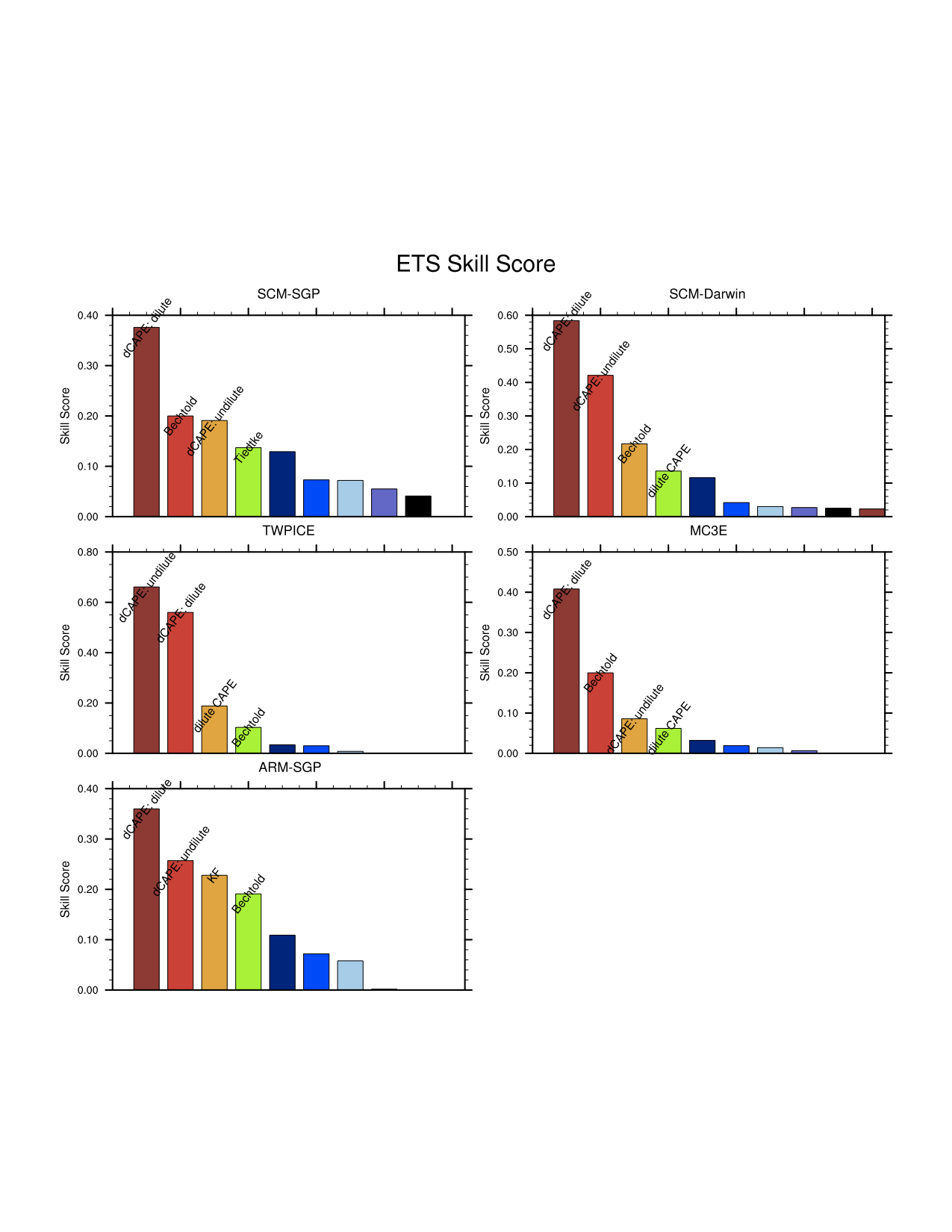Evaluation of trigger functions for convective parameterization schemes
Submitter:
Zhang, Guang — University of California, San Diego
Area of research:
Radiation Processes
Journal Reference:
Science
In a convective parameterization scheme, the trigger function activates the onset of convection. Hence, an accurate trigger function is important to the correct simulation of convection in global climate models (GCMs). However, the formulation of trigger functions in many of convective schemes is ad hoc and convection is often activated too easily. The over-activation of convection can lead to large errors in both the amplitude and variance of different modes of atmospheric variability, including Madden-Julian oscillations (MJO) and diurnal cycle of precipitation. There is no systematic evaluation of convective trigger functions to date. Confidence can be gained by systematically assessing the performance of different trigger functions using observations from different climate regimes. In this study, we evaluate and quantify the performance of commonly used trigger functions using data from intensive operational periods (IOP) of ARM field campaigns and long-term forcing data prepared for single column models (SCM) by the Atmospheric System Research (ASR) program over different geographical locations.
Impact
Using three IOP data sets (ARM-Southern Great Plains 1997 field experiment (SGP97), Midlatitude Continental Convective Clouds Experiment (MC3E) and Tropical Warm Pool - International Cloud Experiment (TWP-ICE)) and two multi-year SCM forcing data sets at the Southern Great Plains (SGP) and Darwin, Australia sites, we conducted a systematic evaluation of ten trigger functions in convective parameterization schemes of most major GCMs in the world. Based on the predicted and observed convection at each time, we separated the results into four categories: (a) correct-prediction, (b) over-prediction, (c) under-prediction of convection, and (d) correct no-convection prediction. The performance of the trigger functions was then evaluated and ranked according to their Equitable Threat Score (ETS), a statistical method often used in the evaluation of weather forecasting. A skill score close to 1 indicates excellent performance by the trigger function and close to 0 implies poor performance.
Summary
Three best performing convection trigger functions were identified. They are based on dilute and undilute convective available potential energy (CAPE) generation rate from large-scale forcing in the free troposphere (dilute and undilute dynamic convective available potential energy (dCAPE)), and parcel buoyancy at the lifting condensation level in Bechtold scheme (Bechtold et al. 2004). The key variables used to define these trigger functions are further examined. It is found that the dilute dCAPE trigger function performs the best consistently in both tropical and midlatitude convective environment. Analysis of the composite fields of key variables of the trigger functions brings to light some critical factors responsible for the performance of the trigger functions. The lower tropospheric advective forcing in dilute dCAPE trigger and vertical velocity in Bechtold trigger are identified to be the ones of most importance.


